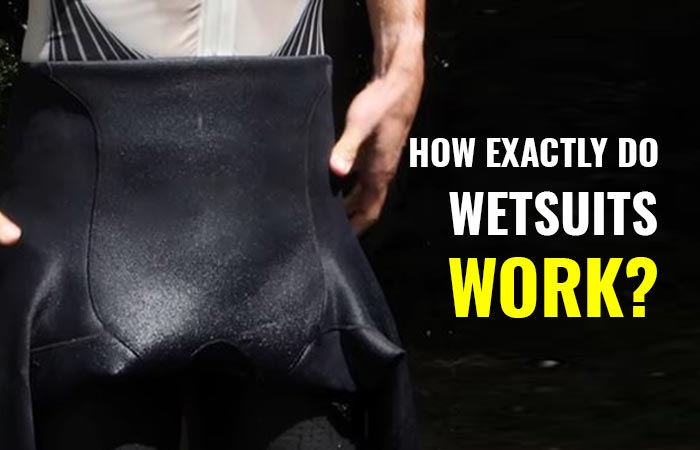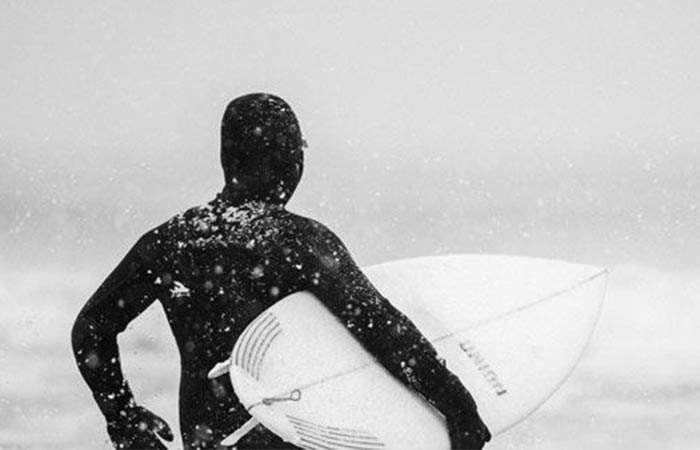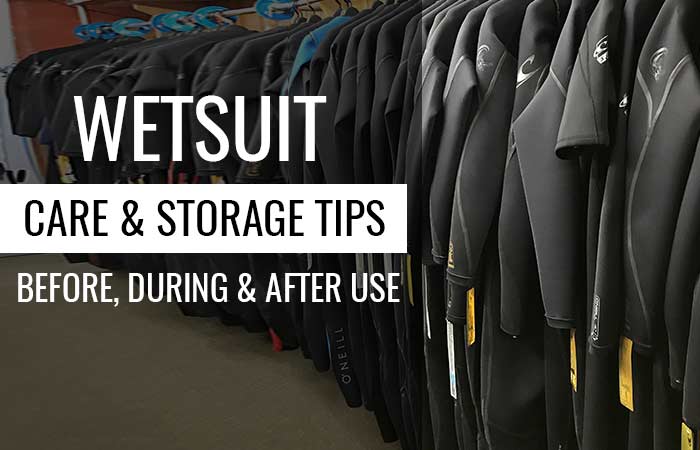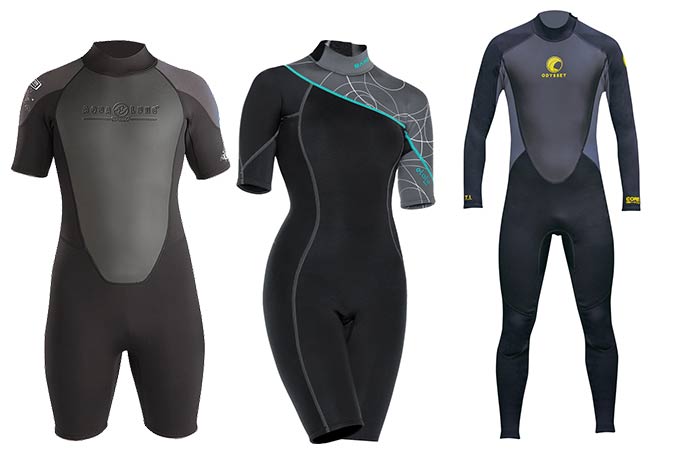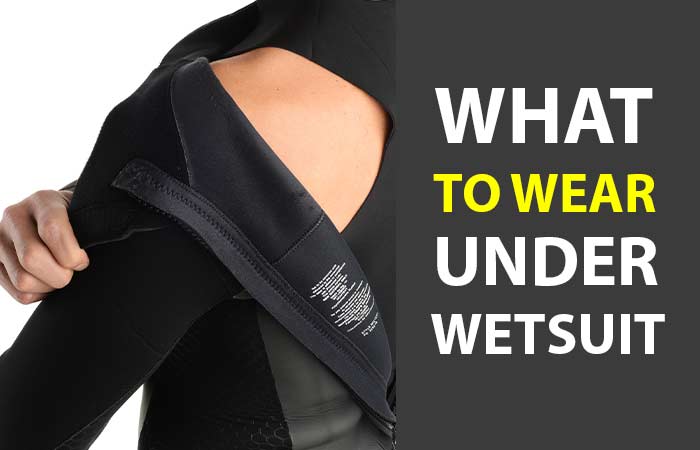Best Hypoallergenic Wetsuits for Neoprene Allergy
Whether you’re looking for a wetsuit or have one already, you might have had issues with allergic reactions to neoprene or other forms of rubber. This can be quite disheartening especially when all you want is some fun in the water.
The Yulex R1-R4 by Patagonia are some of the best hypoallergenic wetsuits water lovers who are sensitive to neoprene. Follow is a review of the Patagonia wetsuits plus tips to avoid the reactions while using neoprene wetsuits
Patagonia Men’s R5 Yulex Front-Zip Hooded Wetsuit
First up is the R5 Yulex Hooded Wetsuit. This is one of the many wetsuits made by Patagonia that don’t use neoprene at all. Instead, the suit is made of 85% natural rubber with the remaining 15% made of chlorine-free synthetic rubber. The natural rubber used in this wetsuit is FEC certified by the Rainforest Alliance hence safe for use by anyone no matter your sensitivity.
The hood, thighs and torso have a lining to increase the warmth in these vital regions of the body. This lining is made of 95% solution-dyed polyester that’s 51% recycled, and 5% recycled spandex thermal microgrid lining. Besides keeping you warm, it also dries quite fast and is highly flexible.
To keep the wetsuit flexible, warm and hypoallergenic, solvent-free AquaA glue is used. The arms and legs with the joints are made with recycled polyester to avoid restricting the user. All the seams are triple-sealed against water. You thus won’t have to deal with excessive water entering the wetsuit. The seams are also highly durable thanks to this type of sealing.
Besides these great features, you also get a front zip with an adjustable hood with a chord lock. The zipper is the corrosion-resistant Salmi type which won’t rust or corrode no matter how many times you take a dive in the salty sea. Added on that is a key loop which is well-tucked in for safety.
Pros
- Meant for cold waters between 31-38°F (0-3°C).
- Made with rubber making it hypoallergenic.
- The hood, thighs and torso have an extra lining made of microgrid lining made of polyester and spandex. It offers warmth and dries up quickly.
- Highly flexible and stretchable polyester with water-based glue which is hypoallergenic.
- The seams are triple-glued and taped to Lernout excessive water.
- Has a front zip which is easy to keep out the water.
- Adjustable hood for a better fit and a key loop.
- Supratex knee pads are flexible and offer support to the body.
- Available in all sizes from small to extra large.
Cons
- A bit thick so limits the mobility of the user.
If you intend to hit the cold waters and are allergic to neoprene, this is the wetsuit for you.
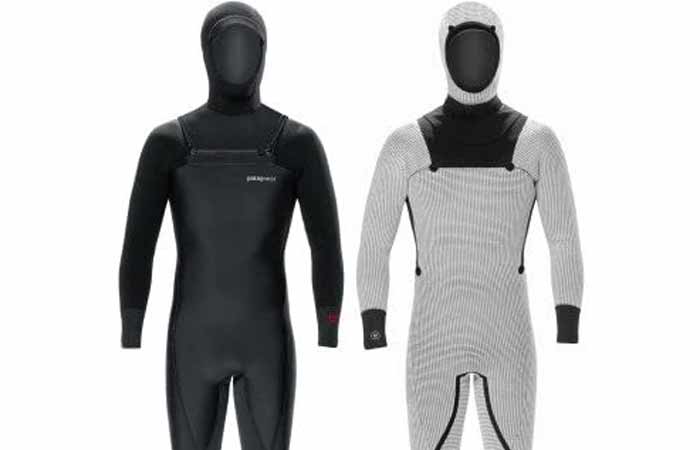
Patagonia Men’s R4 Yulex Front-Zip Hooded Full Suit
Another one from Patagonia, the Yulex R4 is a thinner version of the R5. It shares the same great features with the other members of this line of wetsuits and yet still has features that set it apart from the rest of the lot. It’s made of the natural rubber without any allergenic chemicals making it hypoallergenic.
This wetsuit is made of 85% Yulex natural rubber and the other 15% is made of synthetic rubber. The synthetic rubber is free of chlorine and any other harmful chemicals making it very mild and easy to use. The R4 also comes with a thermal microgrid lining which offers extra warmth and dries quite fast.
This lining is made of a mix of spandex and polyester and covers the hood, torso and the thighs.
The seams are triple-sealed then taped to keep out the water. The glue used is water-based and is free of any solvents that might harm your skin. It also comes with an asymmetrical front zipper that’s corrosion-free. Besides that, you get an adjustable hood opening with a chord that allows you adjust the opening of the hood for a better fit.
Pros
- Meant for waters from 38 to 48°F (3° to 9°4C).
- Made of hypoallergenic natural rubber.
- Thermal microgrid lining increases the warmth in the thighs, torso and hood.
- The linings are made of high-stretch polyester and spandex.
- Solvent-free AquaA glue prevents skin reactions.
- Asymmetrical front zip keeps out excessive water from entering the wetsuit.
- Supratex knee pads protect the knees while offering flexibility on the lower legs.
Cons
- None
For slightly warmer waters, this one is the best wetsuits. Most importantly, it helps prevent allergic reactions to neoprene.
Patagonia Men’s Yulex R3 Front-Zip Hooded Full Suit
The third entry on our list also comes from Patagonia and is the Yulex R3. This wetsuit is meant for waters between 48°F and 55°F (9°-13°C) and is made of 85% natural rubber and 15% synthetic rubber. The synthetic rubber used is free of chlorine and any other harmful chemicals and thus won’t affect anyone with neoprene allergies.
For warmth in such cold waters as mentioned above, the wetsuit has a thermal microgrid lining that’s made up of polyester and spandex. Besides adding warmth to the wetsuit, it also makes the wetsuit dry fast thus preventing the cooling effect that occurs when you come out of the water.
For purposes of flexibility and movement, the wetsuit has linings made of highly stretchable materials. The outer lining of the suit is made of 100% recycled polyester while the inside is made of 85% recycled polyester and 15% recycled spandex. The same industry-leading solvent-free AquaA glue is used in tripling-sealing the wetsuit. Tape with a low profile is also added on the outside of the wetsuit to provide a further seal.
Pros
- Suited to waters between 48°F and 55°F (9°-13°C).
- Made with natural rubber that is hypoallergenic.
- Has a warm microgrid lining for the hood, torso and thigh regions for extra warmth.
- Uses recycled polyester and spandex linings to make the wetsuit flexible and stretchable.
- Uses a water-based glue to prevent any skin reactions.
- The seams of the wetsuit are triple-sealed and taped to keep out any excessive water.
- Front asymmetrical zipper is used to keep it excessive water.
- Has an adjustable hood for a better fit.
- Fitted with flexible and durable cuffs and knee pads.
Cons
- None
With this wetsuit, you can tackle the cold water knowing you won’t worry about skin reactions thanks to the natural rubber used to make it. While it has three versions, the one reviewed here is the best of the lot.
Patagonia Men’s R2 Yulex Front-Zip Full Suit
Still from Patagonia, the R2 Yulex is a thinner version of the R3 but with the same great qualities as the other wetsuits in this lineup. Owing to its relative thinness, the R2 is best suited to waters at 55-60°F (13-16°C). Like other entries from Patagonia, it’s made of their high quality Yulex natural rubber at 85% with the other 15% being made of chlorine-free synthetic rubber. This mess that your skin won’t react to it if you’re allergic to neoprene.
The R2 also has the beloved thermal microgrid lining which is found in its siblings in the R-series. The lining, made of 95% polyester and 5% recycled spandex, adds both comfort and warmth to the body. It’s also a quick drying option which helps reduce the cooling effect on the body when you get out of the water on a windy day.
The other great features such as having a water-based glue, great and expandable linings, linings, right seams that are triple glued, a front asymmetrical zip and knee pads are all included in this wetsuit.
Pros
- For waters at 55-60°F (13-16°C).
- Made of natural rubber and chlorine-free synthetic rubber that are hypoallergenic.
- Has a thermal microgrid lining which keeps the torso, head and thighs warm and dry.
- Uses recycled polyester and spandex to keep the wetsuit flexible and stretchable.
- Uses water-based glue to keep the wetsuit sealed and hypoallergenic.
- Triple sealed and taped seams keep excessive water outside.
- Front asymmetrical zip keeps the water out.
- Flexible and durable knee pads keep the user comfortable and protected.
Cons
- None
While we can categorize this wetsuit with those meant for warmer waters, it’s still suitable for cold waters since 55°F is still quite cold. Most importantly, it’s made with natural rubber that’s hypoallergenic.
Patagonia Men’s R1 Yulex Front-Zip Full Suit
Wrapping up the list of the entries from Patagonia is the R1. It’s the thinnest of the Patagonia wetsuits and is also made of 85% natural rubber and 15% chlorine-free synthetic rubber. The benefit of this combination is that it keeps the wetsuit hypoallergenic for those who react to neoprene. This goes a long way in keeping users free of the neoprene reactions detailed above.
It’s available in nine sizes from small to extra large all having the same benefits coming from natural rubber. The same thermal lining found in the other members of the R series is found in this one as well. The thermal microgrid lining is made of 95% recycled polyester and 5% recycled spandex. It keeps regions such as the torso, thighs and hood warm.
It has water-based glue that combines with tape to provide a solid yet highly flexible seal for the seams. The asymmetrical front zip design keeps the wetsuit from allowing in excessive water into the wetsuit. The zipper itself is corrosion-proof to last in salty sea water. You also get a key loop and a flexible knee pads and cuffs that keep out water from entering the suit through the arms.
Pros
- For water about 60 – 65°F (16 – 18°C).
- Made with natural hypoallergenic rubber.
- Thermal microgrid lining keeps the torso and thighs warm.
- Durable and flexible knee pads and cuffs keeping the user flexible and the excess water out respectively.
- Comes with a key loop and front asymmetrical zip that keeps the water out.
- Corrosion-free zipper.
- Seams are triple glued and taped to keep out excessive water from the wetsuit.
- Water based glue to keep out water.
Cons
- None
For the adventurous ones, this is one wetsuit that will do lots in giving you the fun and less in giving you the itch from neoprene allergies thanks to the natural rubber used to make it.
As time goes by, more and more manufacturers are getting into the business of making neoprene free wetsuits to accommodate everyone no matter their type of allergy.
Why allergic reaction to Neoprene?
When you come into contact with neoprene or a similar material, your skin may either react or not. When you react to it, it may either be Allergic Contact Dermatitis (ACD) or Miliaria Rubria (prickly heat). The prickly heat part isn’t common since it occurs when you’re heated up in the wetsuit and your skin responds to the heated neoprene.
The most common reaction is contact dermatitis and its due to the chemicals in the neoprene primarily thiuram. Besides this one, neoprene usually has the following chemicals all of which can lead to a reaction of some form:
- P-tert-butylphenol formaldehyde resin
- Zinc diethyldithiocarbamate
- Dipentamethylenethiuram disulfide
- Mercaptobenzothiazole
- Mercapto mix
- Methylisothiazolinone: antibacterial agent
With these chemicals in neoprene, you may experience any of the following reactions:
1. Skin eruptions
This can be felt all over the body each time your skin comes into contact with neoprene or other types of rubber. You will likely notice some scars with a clear liquid in them. They may or may not be painful.
2. Itchiness
You may feel itchy for a while after coming into contact with neoprene. The level of intensity of the itch and how long you’ll feel it differ for each individual.
3. Change in skin color
In some people, your skin may turn red owing to the neoprene reaction. This, luckily, is temporary as it goes away after a while.
4. Swelling skin
You may also experience some swelling on the skin after coming into contact with the neoprene. The skin may also feel warm in such a case.
For all these reactions, the solution to this is getting wetsuits that are hypoallergenic. Some may be without neoprene while others may be made of neoprene but without the chemicals known to cause reactions. In this guide, we review some of the best wetsuits without neoprene.
Other Tips to Avoid the Allergic Reaction
Other methods for avoiding the allergic reactions include the following:
1. Using rash guards
Rash guards are pieces of undergarment worn under a wetsuit to keep the wetsuit from coming into direct contact with the skin. For this reason, anyone with a neoprene allergy can still put on a neoprene wetsuit with a rash guard. You might feel some of the allergic reactions noted above owing to the close proximity of the wetsuit to the skin but they won’t be severe.
2. Using neoprene without thiuram
As noted above, thiuram is the part of the chemicals which are found in neoprene and is the one responsible for the allergic reactions. As such, research is being done into producing neoprene that has no thiuram in it. Such a wetsuit won’t harm those with neoprene allergies.
- Best Hooded Wetsuits for Women & Men
- Best Warmest Wetsuits for Cold Water Swimming
- Best Plus Size Wetsuits for Big People
More on Wetsuits
- How do Wetsuits Work?
- What are Wetsuits Made of? Types & Top Brands
- Wetsuits Colors: Why Black? What is the Best Color?
- Wetsuit vs Dry Suit
- How to Properly put on a Wetsuit, Remove+ Dos & Don’ts
- What to Wear Under Wetsuit: Female, Men & Triathlons Undergarments
- How Tight/Fitting should a Wetsuit be?
- Wetsuit Thickness Guide + Temperature Chart
- How to Wash a Wetsuit + Best Cleaners, Shampoo & Soap
- How to Dry a Wetsuit + Best Drying Hangers & Racks
- Wetsuit Storage and Care Tips


